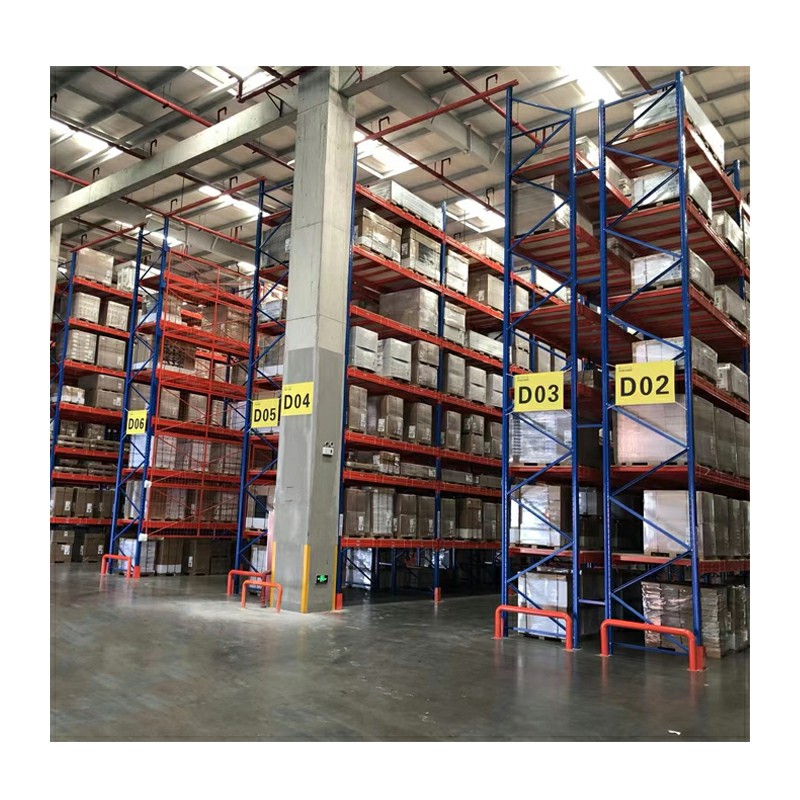Material handling equipment is including machine or storage equipment that is used to transport, process, store, or package materials. For example, forklifts, conveyors, shelves, and even autonomous mobile robots (AMRs) is common use in many industries.
In this post, we go over the Fixed material handling categories and the equipment within each category, hope it can help you gain more load and efficiency from Heda Shelves Racking Equipment.
What is Fixed Material Handling Equipment
Fixed Material Handling Equipment, including Storage Handling Equipment & Bulk Picking equipment, are essential for warehousing, logistic, manufacturing, and other transport or storage needs.
By enhancing storage efficiency and throughput, storage equipment like (pallets,shelving, racking, box&bins,mezzanines) usually compare with conveyers and other picking equipments as a smart storage solution.

Example Type of Storage Handling Equipment
How to Choose Material Handling Equipment
When you choose the material handling equipment, there are many different types of material handling equipment. Including manufacturing, warehousing, agricultural, or construction needs. Which is the right storage handling equipment for you? Check the following consideration:
1. Function and Space:
The primary goal of material handling equipment is to improve efficiency. This starts with a thorough understanding of your operational needs and the space available.
With over 20 years in the material handling business, we've seen firsthand how the right shelving can transform a warehouse. If you're dealing with lots of small, lightweight items that move quickly, our shelving systems are a perfect fit. You can easily store items of all shapes and sizes on the sturdy metal or wire mesh shelves.
Now, for those heavier, bulkier goods? Pallet racks are the way to go. They're designed to handle significant weight and are easily accessible with forklifts, making your operations smooth and efficient.
But let's not forget the importance of operational space! In a busy logistics warehouse or distribution center, you need room for manual tasks like sorting, packing, and labeling. That's why large distribution centers and logistics warehouses often choose mezzanine racking.
It effectively doubles or even triples your usable floor space by creating elevated platforms above your existing storage areas. Think of it as adding extra stories to your warehouse without the cost of new construction!
2. The Type of Materials:
Let's talk storage material. It's more than just finding a place to stash materials. It's about strategically holding inventory – whether it's fresh off the manufacturing line, waiting for distribution from a wholesaler, or chilling out before heading to its final customer or another warehouse.
The right storage equipment setup can seriously boost efficiency on your production floor, squeeze every last drop of usable space out of your facility, and transform your inventory process from a headache into a smooth operation.
These factors are non-negotiable in today's fast-paced production environments. Sure, basic shelves, bins, and drawers have their place – you'll find them in homes and smaller setups. But when we're talking serious commercial operations, you need solutions built for the job. Here's where things get interesting:
Racks:
The major storage equipment of any warehouse. We're talking pallet racks, drive-in racks, push-back racks, drive-through configurations, even sliding racks for higher density storage.
While the variations in pallet racking can seem endless, the core principle remains the same: efficiently storing palletized materials in horizontal rows, stacked vertically to maximize cubic space. We've all seen them, but it's easy to take for granted how crucial a well-designed racking system is to overall throughput.
Stacking Frames:
Think of these as versatile, adaptable building blocks for storage. These interlocking units transform pallets into stackable containers, creating vertical storage space where there wasn't any before. Stacking frames are a simple, cost-effective way to maximize the storage density of your pallet rack system.
They're essentially load-securing devices, offering a flexible alternative to fixed bins or containers. Typically, you'll see them made up of iron posts and connecting frames, resting securely on the four corners of the pallet. This creates a sturdy, open-topped container with significant load retention capability.
Mezzanines:
When you're truly desperate for more space, look up! Mezzanines are elevated floor systems, essentially creating a second (or even third!) level within your existing facility. They're installed from the production floor all the way up to the ceiling, instantly expanding your available square footage.
I've seen Superblock Mezzanine structures work wonders; they are particularly interesting because they can be dismantled and moved relatively easily, making them a game-changer for businesses leasing space or anticipating future growth.
3. Automation vs. Labor:
Finding the right balance between automation and manual labor is essential for maximizing efficiency and minimizing costs.
Automation Benefits:
Automation Considerations:
Manual Labor Benefits:
Manual Labor Considerations:
4. Cost and ROI:
5. Safety Considerations:
6. Supplier Selection:
Need to Start Warehouse Project or Purchase Material Handling Equipment?
If you require industrial storage handling equipment for your warehouse, Heda Shelves has a variety of material handling equipment with tailor solution, including pallet racking, mezzanine racking, industrial shelving solution, forklifts, hand jacks. Partner with us, 23+ years storage racking manufacturer in china, gain a load more, less space solution Now!



Hi! Click one of our members below to chat on





